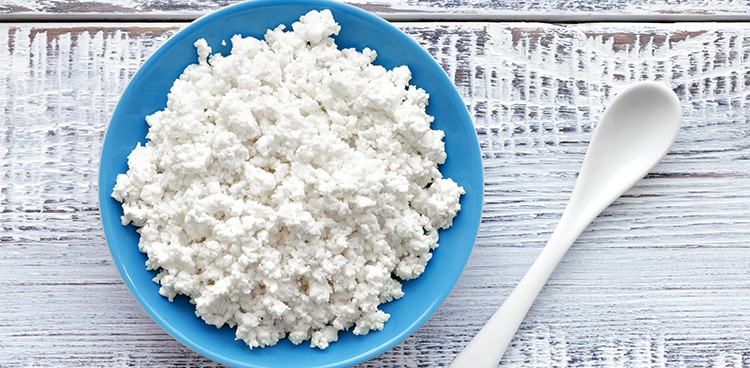
So I’m feeling rather sheepish in writing this post. I’m one of those people who actually used to enjoy a cup of cottage cheese. I appreciated the tartness, the texture, and its saltiness. I liked not feeling the sugary grit on my teeth as I do when I’ve snacked on chocolate, key lime, or other similarly dessert-flavored yogurts. It’s one of the rare, uncorrupted foods in the supermarket. Cottage cheese is a bit lumpy, and a bit bumpy, and its spokesmen may be as homely and uncool as Richard Nixon and Michael Vale (he played Sam Breakstone in the company’s ads), but there is something to be said for being okay with who (or what) you are. No pretensions and no airs. Just a simple cheese in a complex world.
So why do I feel guilty? Well, as NPR reports, average American consumption of cottage cheese was about 5 pounds per capita annually in the 1970s, but enjoyment of this gentle soul of a fresh, soft cheese is down. WAY down. While yogurt consumption has increased by sevenfold in recent times (growing from 2 to 14.9 pounds a person annually), cottage cheese consumption has been cut in half. And so my guilt is that I’ve walked by that supermarket shelf stocked with a few lonely brands of cottage cheese, and headed straight for the cases upon cases of yogurt.
It’s hard to blame the consumer, when yogurt makeovers get sexier and sexier. On top of types of yogurts, everything from Greek to goat, soy to Skyr, you also have the flavors. And what a rhapsody of flavors they are! Someone at Chobani is having a ball with the Flip flavors—let’s face it, it’s hard to resist pineapple coconut yogurt, with hazelnut granola and toasted coconut toppers!
On top of this unsexy image problem (as Tim Noll, a plant manager for a now-shuttered Wisconsin cottage cheese manufacturer, explained to NPR), some of cottage cheese’s fate may be attributable to the product’s trickiness. Cutting the curds into smaller cubes, cooking and washing them, and then adding cream takes a deft hand.
And then there’s the telltale nutritional comparison. EatingWell recently pitted plain Greek yogurt and cottage cheese side by side. While cottage cheese packs more protein, it also contains much more sodium (5 times as much), more calories, and less calcium than its yogurt cohort. (Of course, who really eats plain Greek yogurt these days?)
So what’s my take away from this? I think it’s time to recommit and bring cottage cheese back onto my personal menu. After all, I’ve got more than enough love to give multiple dairy products.
Feature Photo Credit:Cottage” by “Sea Wave” | Shutterstock



